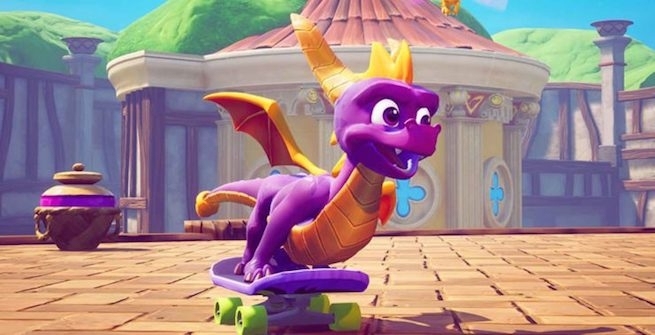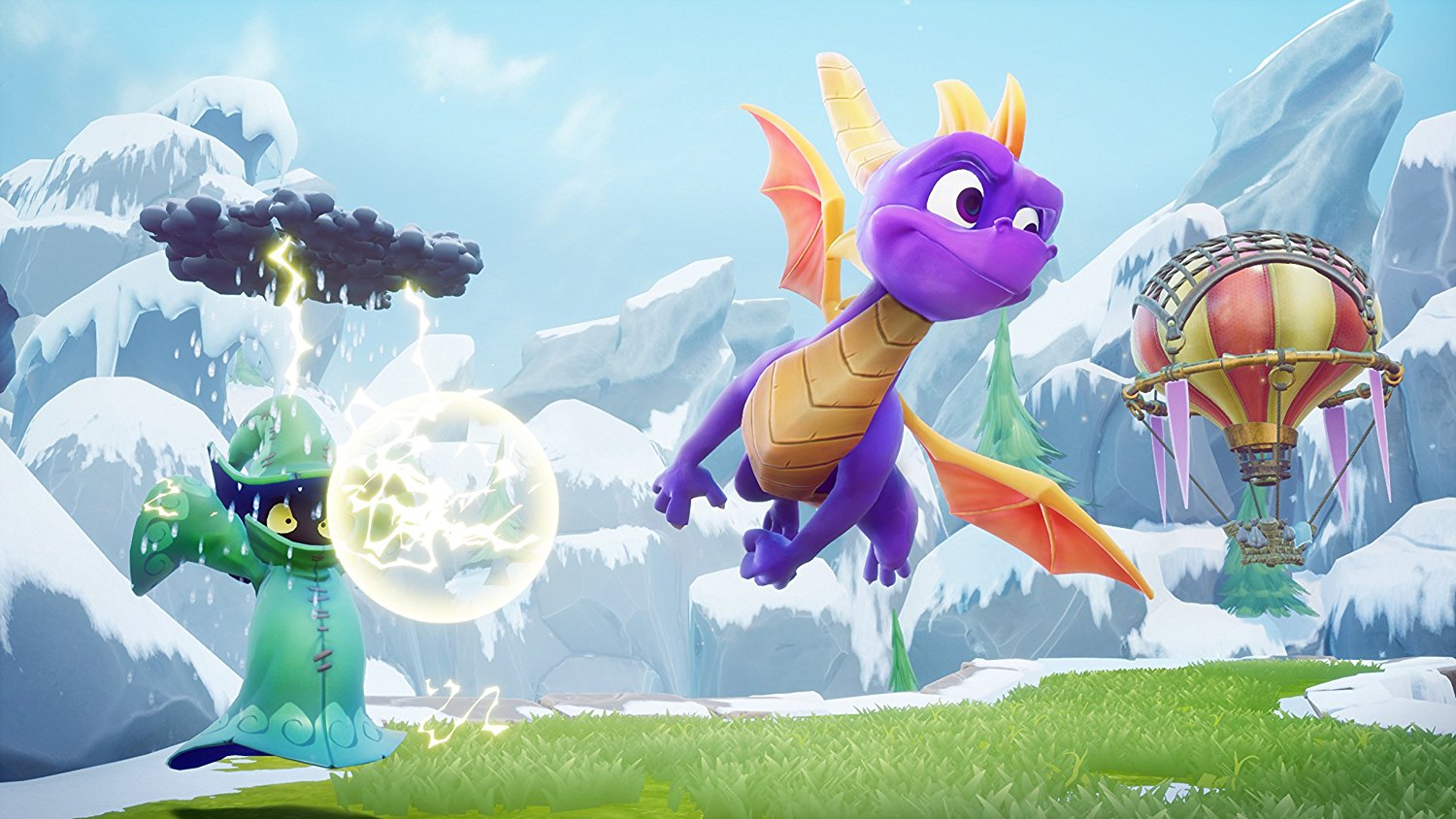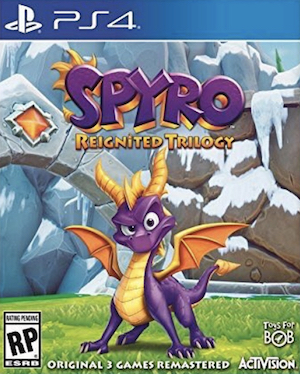
Super Mario 64 on the Nintendo 64 was a groundbreaking title, showing just how well SNES-era sidescrolling platformers could make the transition to a fully polygonal, 3D world. Despite having had an extra year on the market compared to Nintendo’s console, it was quite some time before the Playstation had something comparable, in the form of, first Crash Bandicoot, and then, Spyro. And just who was behind these Playstation platformers? Well, if you looked at their current work on PS4, it’d be hard to tell, but Naughty Dog, the developers of Uncharted, created Crash Bandicoot, and Insomniac Studios, well-known today for their open world superhero title Spider-Man, created Spyro.
Crash Bandicoot received a lovingly-crafted remaster a while back. Spyro’s just received the same treatment. Spyro Reignited Trilogy plays identically to the original Spyro games on Playstation, but has been completely built from scratch in Unreal 4. Considering that Toys for Bob didn’t have access to the original Spyro source code, it’s quite remarkable just how well the remaster corresponds to the original on Playstation, to the extent that many reviews have criticized it for playing like a game out of its time. While gameplay’s remained almost completely unchanged over the past 20 years, Spyro’s visuals have received a truly massive upgrade with Reignited. We’re going to have a look here at just how far the boat’s been pushed out, three console generations after the original appeared on Playstation in 1998
For starters, render resolution has received a massive upgrade, across all platforms. The original Playstation outputted at a meagre 320×224. On a midsized, late-90s CRT, that may have looked presentable, but it’s almost shockingly ugly when upscaled to fit on large, modern displays. After twenty years, Spyro Reignited outputs at 1440p and 30fps on Xbox One X, a staggering 51 times as many pixels as the original. Of course, the simplistic artwork and low-poly models meant that the original held up well in 1998, but side to side the difference, just in terms of image quality is nothing short of astonishing. Considering how light the game is, we are a little surprised that Toys For Bob chose fairly conservative rendering targets. We’d have liked seeing native 4K on the One X—which has certainly been delivered by more technically challenging titles—but, nevertheless, the painterly art style employed means that even 1440p holds up fairly well on 4K displays.
One thing that’ll immediately strike you about Spyro: Reignited is assets have been rebuilt entirely from scratch to match current-gen expectations. All objects and characters are completely redone and, just as with the resolution increase, the increase in model poly count is tremendous The entire first level of PS1 Spyro comprised approximately 5,000 polygons, which is significantly less than what’s used to just render Spyro’s character model in Reignited.
Key set-pieces and environmental details—like towers, for instance—remain in the same location, but are no longer flat and blocky: details like windows, which were previously just flat textures, are fully modelled. While sticking fairly close to the original design, some liberty been taken with the scope of the game’s artistic vision, especially with regards to minor details. Incidentals, like the paintings in the tower in the first level just don’t exist in the originally, though they’d have been tonally appropriate. This also meshes well with the all-new cutscenes. Each dragon in Reignited is given its own distinct personality. For instance, Nestor, the dragon on the Artisan world, just a green blob in the first game, is now depicted as a carpenter: these flourishes add oodles of character to the remaster without seeming out of place.
Texture quality has also seen a significant boost to match the new, high-poly models. The original Spyro titles used 64×64 textures, which would just look like a blurry, pixelated mess on modern displays. Reignited’s 4K textures look wonderful on hi-res displays, but come at the cost of a 67 GB install size: to put this into perspective, each individual PS1 game was about 300 MB. One area where this boost in texture resolution is most palpable is the skybox. PS1-era Spyro’s skybox was a murky, blurry mess in levels like Treetops. In Reignited, the sky is quite literally reimagined, with an aurora now shining down on the level. All surfaces receive a massive bump in texture resolution—not just the sky, but characters and, the ground, and trees all look far sharper than before.
Unlike most remaster efforts, Spyro Reignited was built from the ground up on a new engine, Unreal 4. What’s especially interesting is that, despite not having access to the original’s source code, Toys For Bob managed to get Reignited’s levels to sync perfectly with the original through the use of an in-house too called the Spyroscope, which scanned the data from the original game and output information about, for instance, jump distances. While the levels play out identically to their PS1 predecessors, the move to Unreal 4 has meant significant changes under the hood, with respect to visuals. For starters, Reignited features advanced lighting, with most, though not all, objects casting real-time shadows. Enhanced shader work is evident in the water, which now has reflections and seemingly features caustics, as seen in the ripples when Spyro takes a dive. Particles are massively improved—this is most evident in the much-enhanced fire-breathing effect. Reignited also make use of per-object motion which, when combined with the high-res assets and improved lighting, make some areas, especially the cutscenes, appear almost indistinguishable from CGI. Lastly, the grass is a noticeable change: The original titles made use of low-res ground textures to convey the existence of grass. In Reignited, you get lush, animated blades of the green stuff anywhere you look.
All in all, Toys For Bob has done a commendable job with Spyro Reignited. While we’re a bit disappointed with image quality at the top-end—surely, the One X can manage more than 1440p in this title—when put side by side with the source material, Reignited is a stunning effort. By carefully adding in extra detail, all the while retaining the tone and character of the originals, Reignited manages to convey the same sense of wonder that the originals would’ve offered to players in the late 90s, to a whole new generation.

















